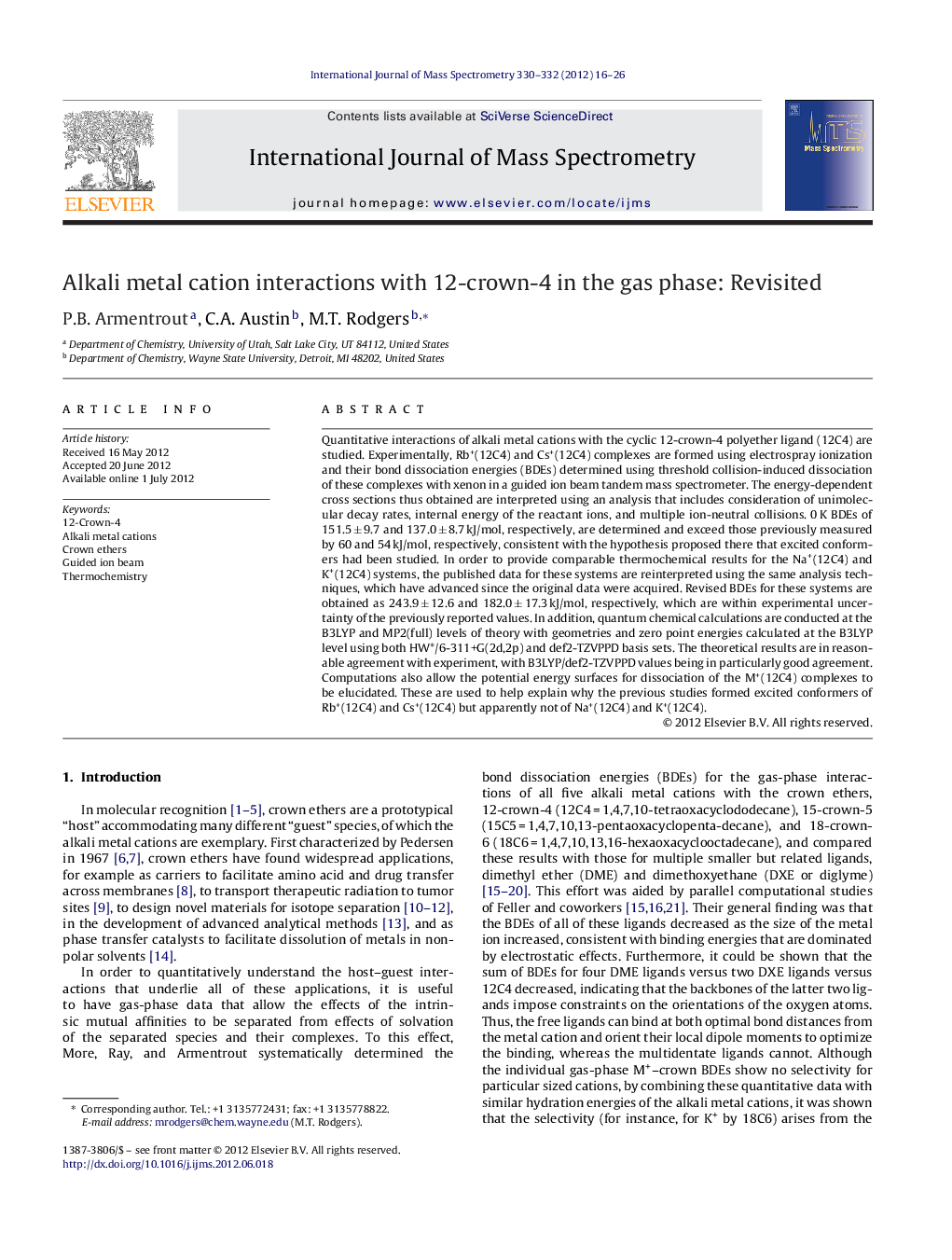| Article ID | Journal | Published Year | Pages | File Type |
|---|---|---|---|---|
| 1194224 | International Journal of Mass Spectrometry | 2012 | 11 Pages |
Quantitative interactions of alkali metal cations with the cyclic 12-crown-4 polyether ligand (12C4) are studied. Experimentally, Rb+(12C4) and Cs+(12C4) complexes are formed using electrospray ionization and their bond dissociation energies (BDEs) determined using threshold collision-induced dissociation of these complexes with xenon in a guided ion beam tandem mass spectrometer. The energy-dependent cross sections thus obtained are interpreted using an analysis that includes consideration of unimolecular decay rates, internal energy of the reactant ions, and multiple ion-neutral collisions. 0 K BDEs of 151.5 ± 9.7 and 137.0 ± 8.7 kJ/mol, respectively, are determined and exceed those previously measured by 60 and 54 kJ/mol, respectively, consistent with the hypothesis proposed there that excited conformers had been studied. In order to provide comparable thermochemical results for the Na+(12C4) and K+(12C4) systems, the published data for these systems are reinterpreted using the same analysis techniques, which have advanced since the original data were acquired. Revised BDEs for these systems are obtained as 243.9 ± 12.6 and 182.0 ± 17.3 kJ/mol, respectively, which are within experimental uncertainty of the previously reported values. In addition, quantum chemical calculations are conducted at the B3LYP and MP2(full) levels of theory with geometries and zero point energies calculated at the B3LYP level using both HW*/6-311+G(2d,2p) and def2-TZVPPD basis sets. The theoretical results are in reasonable agreement with experiment, with B3LYP/def2-TZVPPD values being in particularly good agreement. Computations also allow the potential energy surfaces for dissociation of the M+(12C4) complexes to be elucidated. These are used to help explain why the previous studies formed excited conformers of Rb+(12C4) and Cs+(12C4) but apparently not of Na+(12C4) and K+(12C4).
Graphical abstractFigure optionsDownload full-size imageDownload high-quality image (141 K)Download as PowerPoint slideHighlights► Alkali metal cation binding affinities of 12C4 are determined using threshold CID methods. ► Gas phase DC-FT versus ESI formation of M+(12C4) can produce different structures. ► Ground-state C4 conformers of M+(12C4) are produced by ESI and by DC-FT for Na+ and K+. ► Excited C2 conformers of M+(12C4) are produced by DC-FT for Rb+ and Cs+. ► M+−12C4 BDEs obtained by TCID and B3LYP/def2-TZVPPD agree very well.
